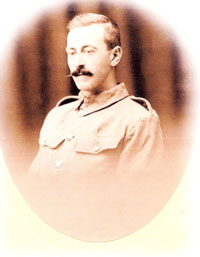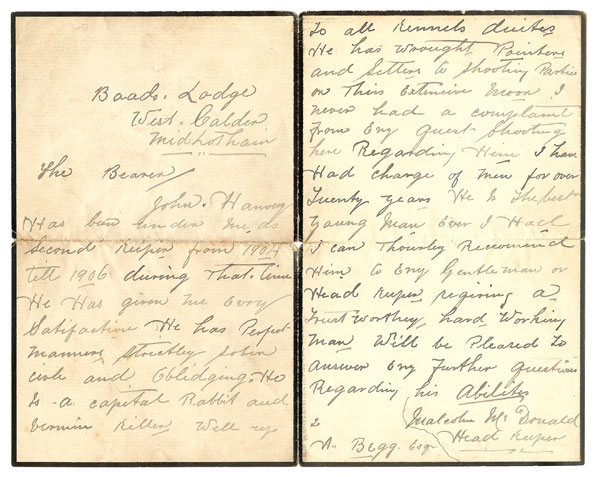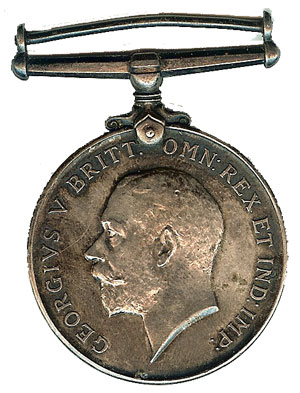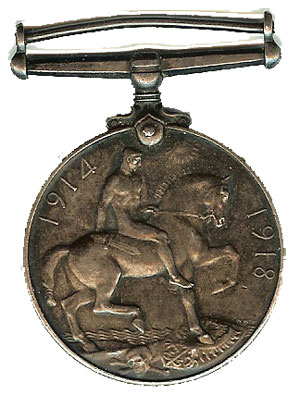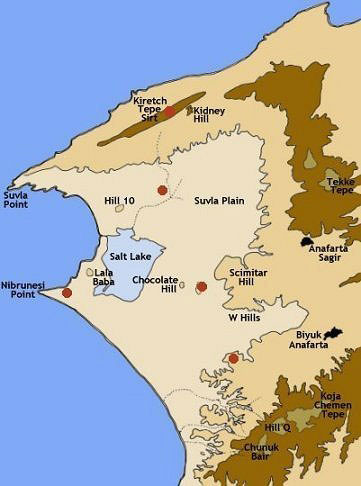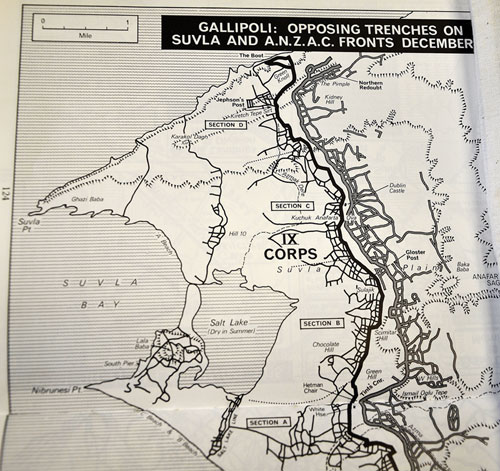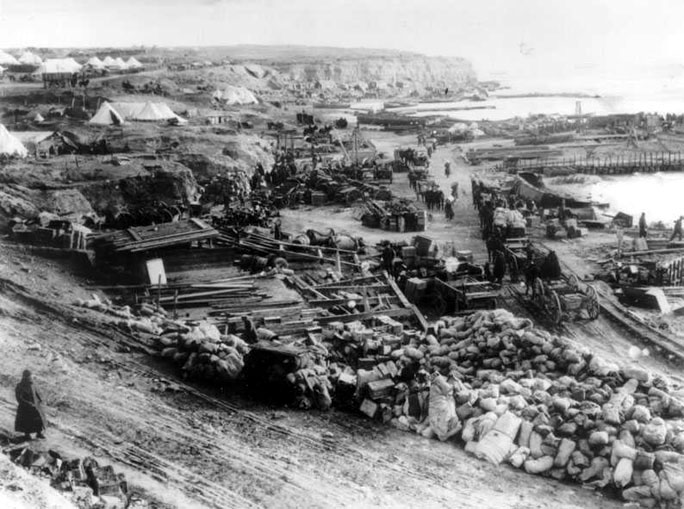 |
CRASTER WAR MEMORIALS World War Two About the Project |
John Hanvey
Acting-Corporal John Hanvey of the Northumberland Fusiliers 8th Bn. Service No. 18149, was killed in action in Gallipoli on October 12th, 1915, aged 36. John is commemorated on the Helles Memorial, which serves the dual function of Commonwealth battle memorial for the whole Gallipoli campaign and place of commemoration for many of those Commonwealth servicemen who died during the campaign and have no known grave. Born in 1879, he was the son of Mrs. Hanvey of Peckham House, Peckham, London and the husband of Elizabeth Elliott Hanvey of 2, Garden Terrace, Dunstan. Elizabeth was born in Alnmouth. In 1891; aged 18, she was a house maid at Howick Hall. John's grand-son, Harry, lives in Seahouses and has explained that the Hanvey family has traced its roots to Ireland and they came to England in the 18th century, shortening their name from O'Hanvey in the process. John began his life in the London area, working as a shipping clerk, before moving to the border area. The following testimonial, unfortunately not dated, but written no earlier than 1906, was written following a period acting as a game keeper at West Calder, in Midlothian.
In May 1907, he was living in the Parish of Eccles at Coldstream, when it was announced that he was marrying Elizabeth Elliott Donaldson, a housekeeper in a hotel, of North Berwick. They were married in June at St Andrew's Episcopalian Church in Kelso. Their son Henry was born in April of the following year, the birth being registered in the parish of Eccles. At some point, he then took a job as gamekeeper on the estate of Admiral of the Fleet Sir William H. May, at Chatto, near Hounam, in Scotland. In March of 1915, some six months before John was killed, Admiral May wrote to him saying, " I was very pleased to hear from you and to learn that you like your work, no doubt it is hard but as far as marching is concerned I expect you can give points to most of them." The letter continues in the same chatty and positive tone and can be read in full here. John is remembered on the memorial in the village of Hounam. At the service of dedication of the memorial, Admiral May spoke of John as , 'a faithful servant and a good friend.' This was reported in the local newspaper and a copy of the clipping can be read here. Following his death, his wife and six year old son were asked to vacate their tied cottage on the estate and they moved to live with Elizabeth's family in Alnmouth. They then moved to Dunstan and were there when the war memorials were erected. Although John had never lived in the area, his widow was a member of the community and his name was entered on the roll of the fallen. John's medal card shows that he was awarded the 1914-15 Star, British War Medal and Victory Medal. His family still have his British War Medal...
It was the practice to emboss the medal owner's name, rank, service number and regiment on the rim of the medal. '18149 A-CPL. J. HANVEY NORTH'D FUS.' The reverse of the medal shows St. George, naked, on horseback armed with a short sword (an allegory of the physical and mental strength which achieves victory over Prussianism). The horse tramples on the Prussian shield and the skull and cross-bones. Just off-centre, near the right upper rim, is the sun of Victory. This medal card records that he fought in the Balkans theatre of war, entering therein on September 9th 1915. If that is the case, it means that he died just over four weeks after his arrival at the front. The Northumberland Fusiliers 8th Bn. in Gallipoli 'The eight month campaign in Gallipoli was fought by Commonwealth and French forces in an attempt to force Turkey out of the war, to relieve the deadlock of the Western Front in France and Belgium, and to open a supply route to Russia through the Dardanelles and the Black Sea. The Allies landed on the peninsula on 25-26 April 1915; the 29th Division at Cape Helles in the south and the Australian and New Zealand Corps north of Gaba Tepe on the west coast, an area soon known as Anzac. On 6 August, further landings were made at Suvla, just north of Anzac, and the climax of the campaign came in early August when simultaneous assaults were launched on all three fronts. However, the difficult terrain and stiff Turkish resistance soon led to the stalemate of trench warfare. From the end of August, no further serious action was fought and the lines remained unchanged. The peninsula was successfully evacuated in December and early January 1916.' Commonwealth War Graves Commission
According the Battalion's war diary, which is kept in the Royal Northumberland Fusilier's Museum at Alnwick Castle, the Battalion left Liverpool aboard the S.S. Aquitania on July 2nd 1915. On the 4th July at 5.30am they were attacked by a submarine, that fired a torpedo, which missed. All ranks fell in on boat stations until 8.30am, when they were dismissed. Later, on the 7th a hostile submarine was sighted at 5.15am and again they all stood to, but there was no attack. They arrived at the Greek island of Lemnos on July 11th, moved by sea to Imbros, an island just off the Gallipoli peninsula. The Battalion moved to Suvla Bay on August 6th, arriving at about 11.30pm. They 'disembarked at 3.30am under fire. Adjutant wounded. Battalion took part in attack on Turkish trenches which was successful. Fighting continues until 7.00am. C.O. wounded and three other officers.' Like a lot of contemporary recording of fighting, officers are mentioned, often by name, while other ranks are not recorded. John's medal card says he entered the theatre on September 9th and the 8th Battalion's diary does record the arrival of a draft of 113 men from the 3rd Battalion on that day. In fact, John sent a card to his mother on September 7th from onboard ship, writing: "This is the ship I sail on sometime soon. I am now aboard not quite settled down though I can see Admiralty House Devonport from her. With Love, John." This suggests that he did in fact arrive in Gallipoli at a later time than the whole Battalion. After September 9th, the Battalion was in trenches at Karakel Dagh, suffering attacks from snipers and artillery bombardment. From the 21st to 29th September the Battalion was in the reserve trenches on the beach, where they suffered from dysentery and then they moved back to Karakel Dagh to relieve the 8th West Riding regiment. The diary records the Battalion being in the firing line from October 8th, improving trenches and constructing new forward line. From the 11th to the 17th October, the diary records, 'In trenches, hostile sniping, bad at first, was got under control, a few shells fired at our trenches no damage, few casualties.'
John Hanvey died on October 12th and is remembered on the Helles Memorial, some way south of the 8th Battalion's place in the fighting. It is not clear when John received his fatal wounds and neither is it clear why he is not named on the memorials at Suvla Bay and whether this tells us something about the circumstances of his death or not. However, his family think that John's body was not found. The Peninsula was evacuated in December, having achieved none of its objectives, at a cost of some 44,00 dead and 97,000 wounded. The withdrawal was the only successful part of the campaign.
Commonwealth War Grave Commission - John Hanvey Northumberland Fusiliers, 8th Bn. War Diary June 30th 1915 to October 31st 1915 John's post card to his mother, September 7th 1915 Letter from Admiral May March 21st 1915 Next of Kin Medallion (The dead man's penny!) Plaque & Scroll |
Home Programme Membership Archive War Memorials History Walk Miscellanea Links Contact Us
